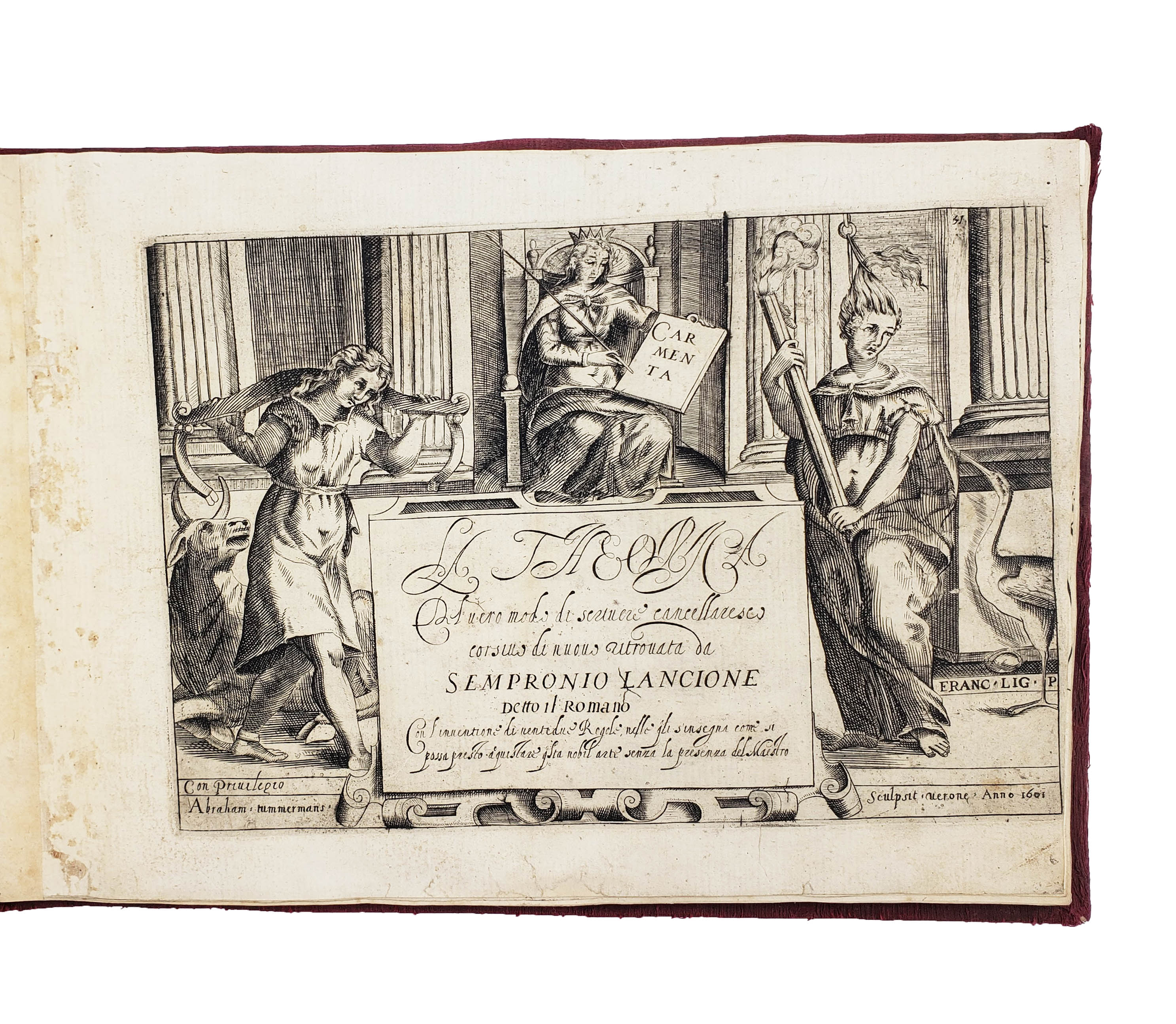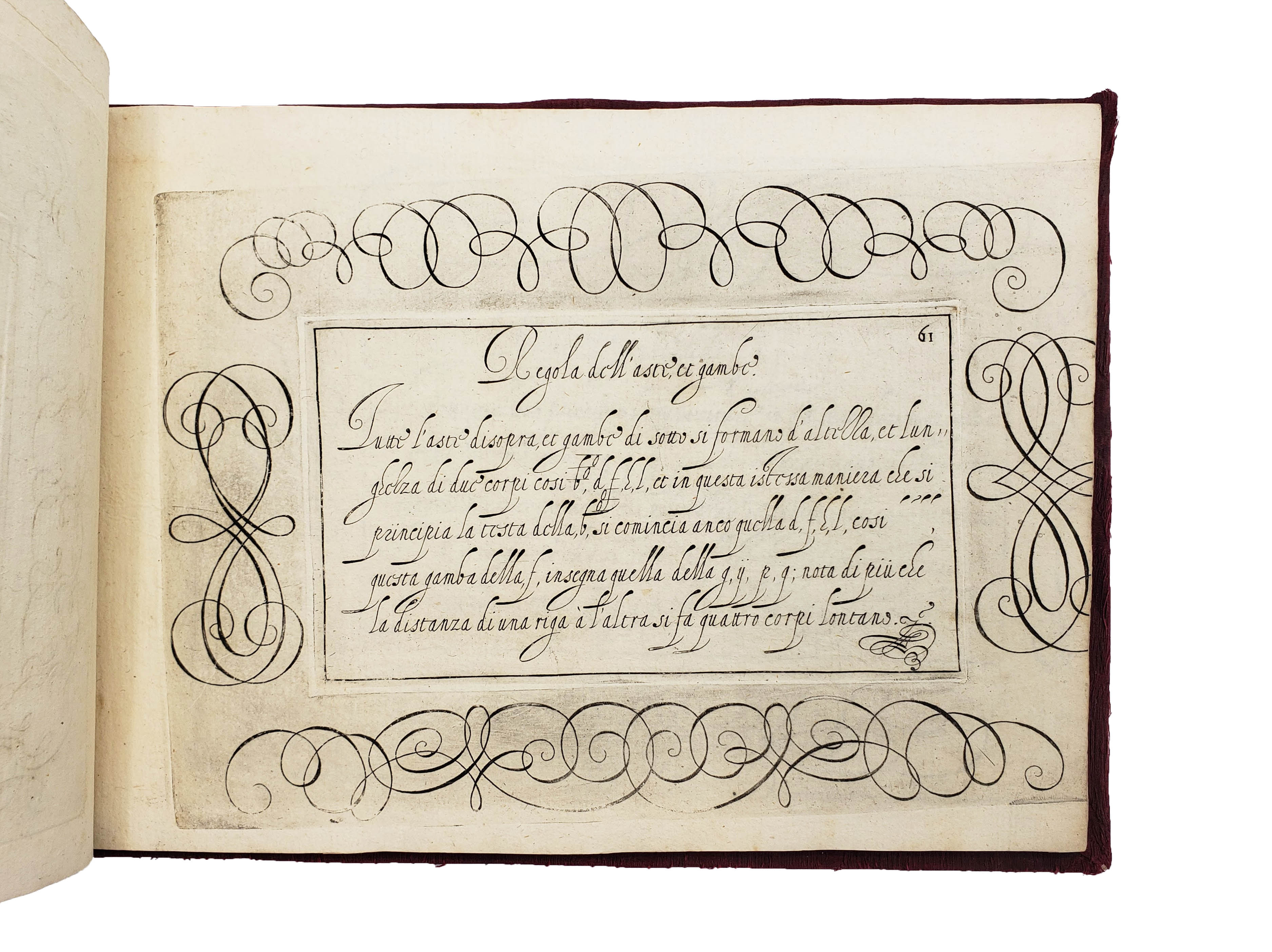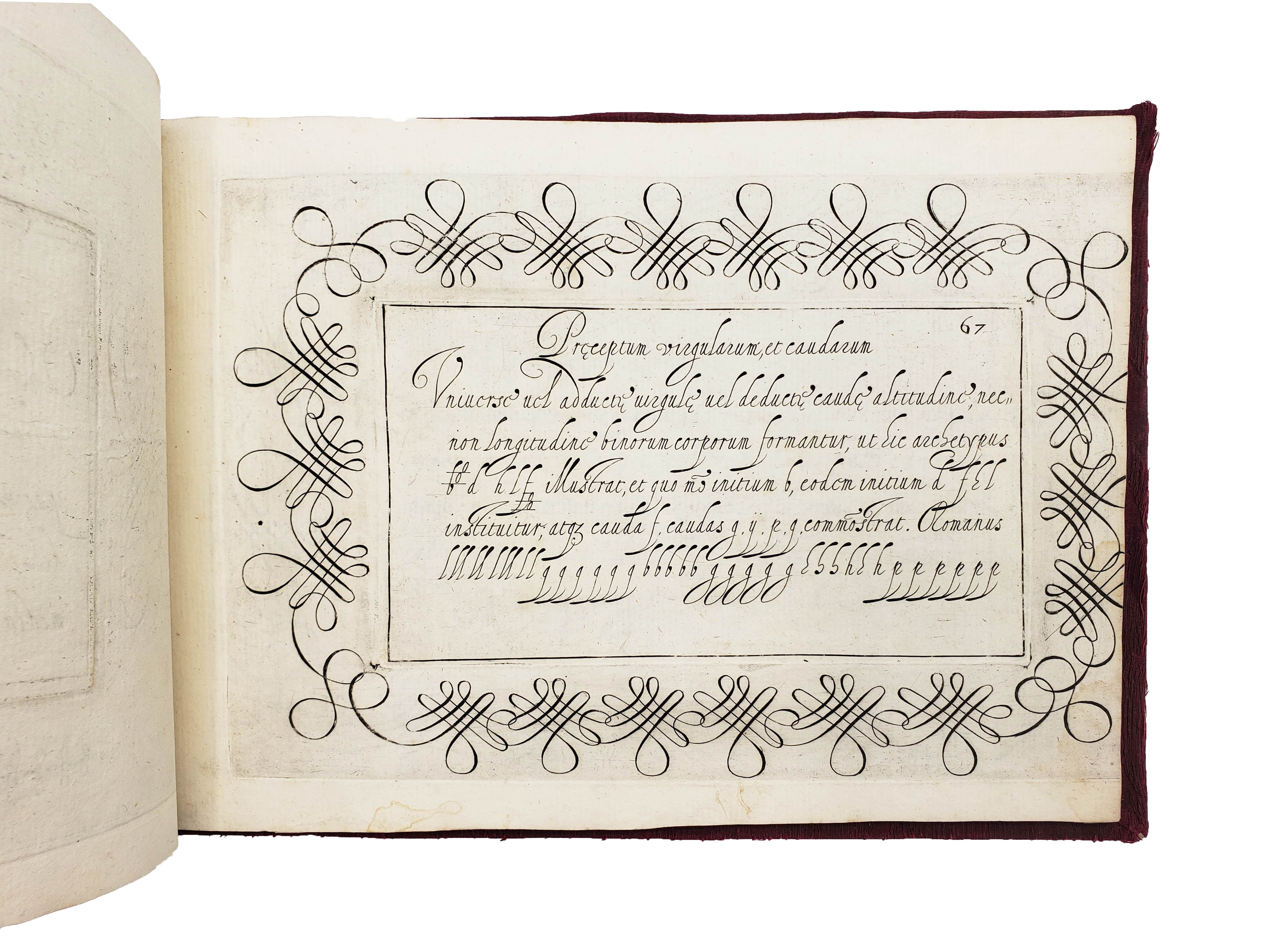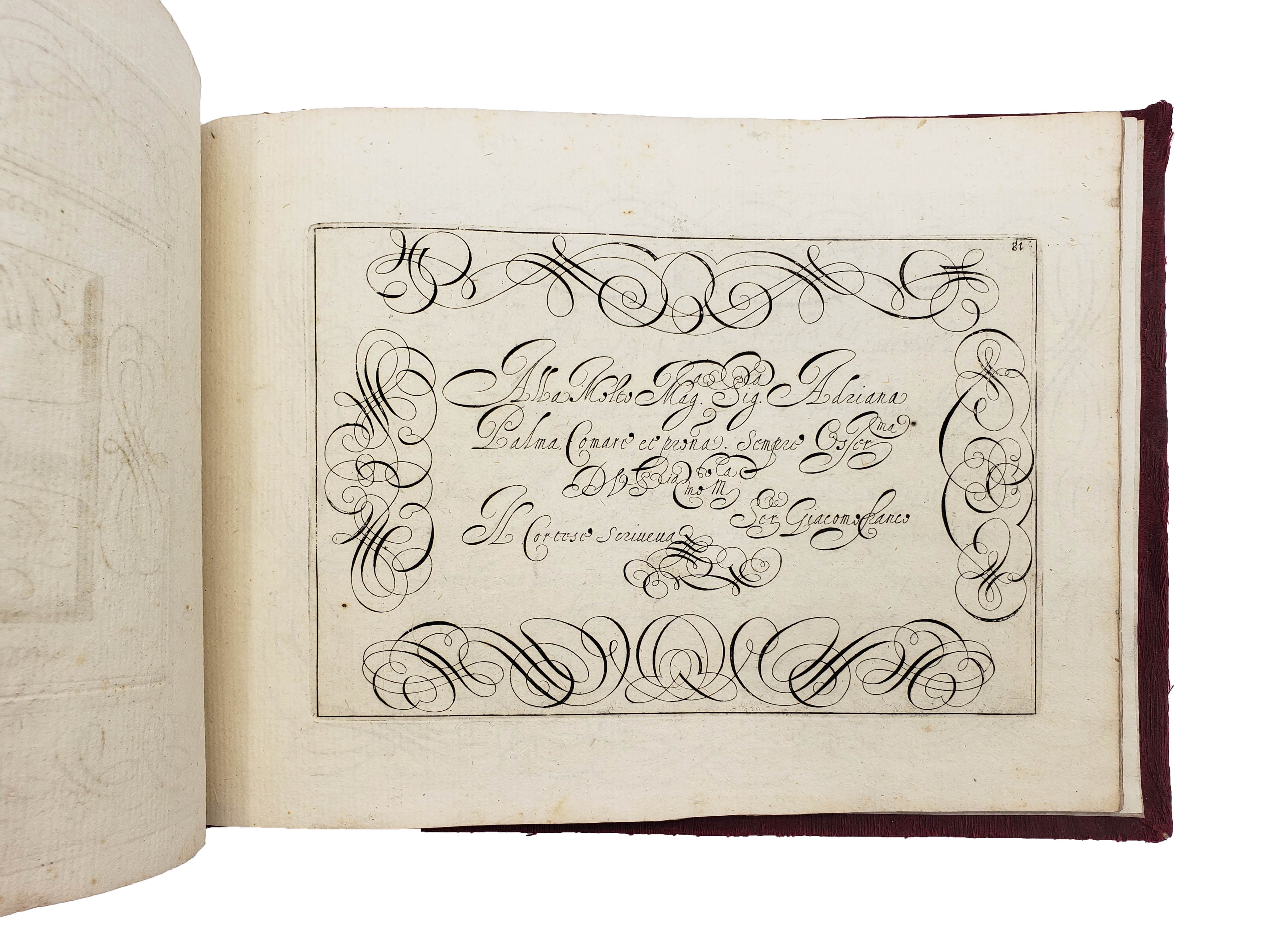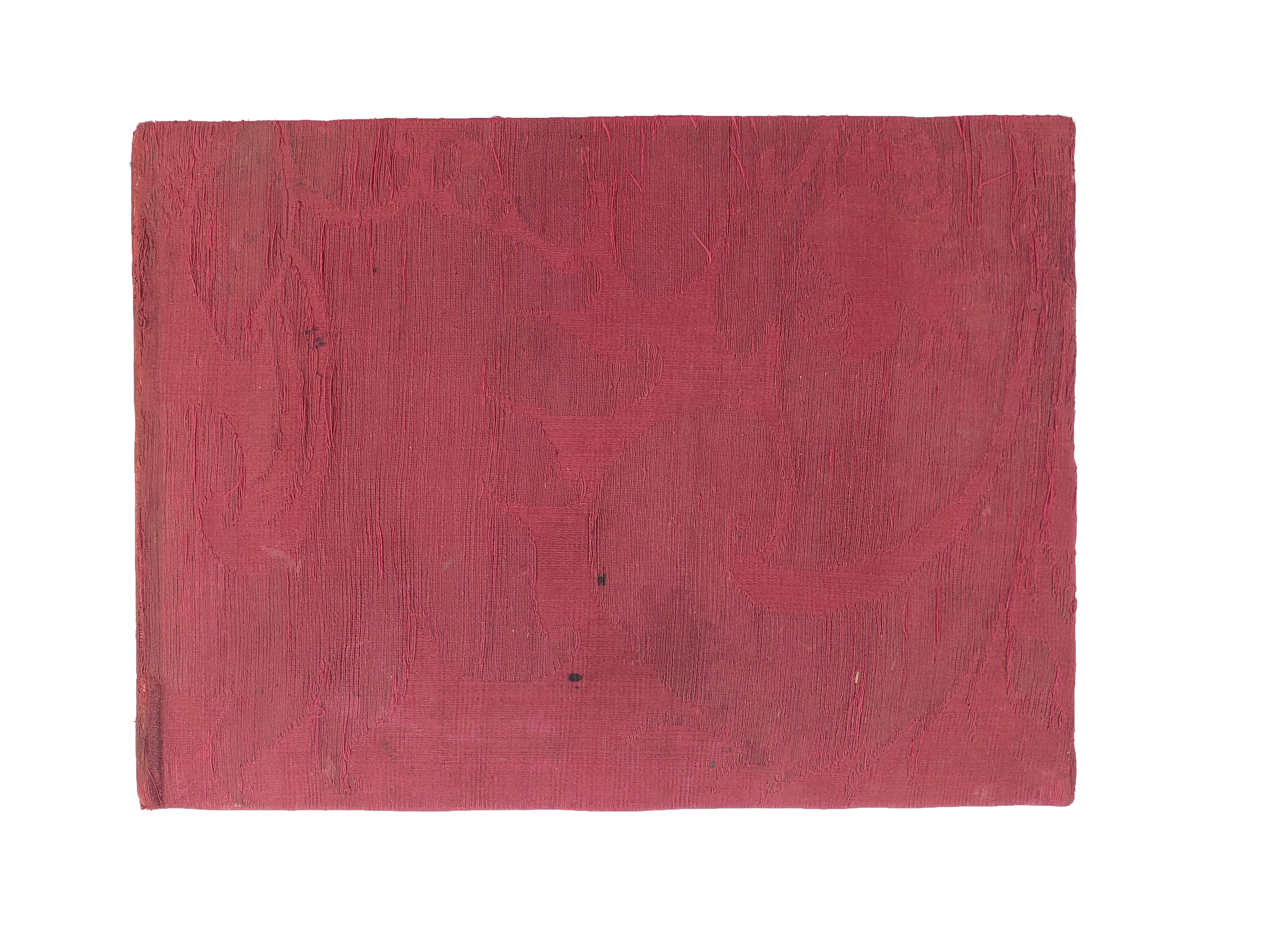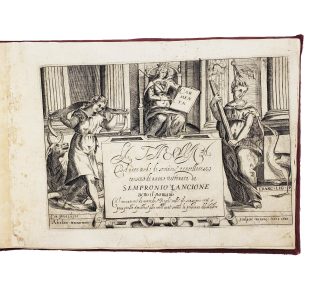LANCIONE, Sempronio.
IN CRIMSON SILK
La Theorica del vero modo di scrivere cancellaresco corsivo.
[Verona, s.n., 1601£5,750.00
FIRST EDITION thus. Oblong 4to. 42 unnumbered ll. of etched plates, some whole page and some comprising two plates – text within calligraphic border – numbered 52-93, showing cursive and calligraphic lettering and calligraphic devices, including quills, cherubs and fish. Engraved title-page, signed (along with first plate and final plate, showing his monogram) by Abraham Tummelmans, Verona 1601, depicting allegorical figures of faithful servants. Early red mauré silk damask binding, restored at joints, 19th-century endpapers. Trimmed with loss at edges of some borders. Title-page reinforced at gutter, some staining, second, introductory leaf with repaired tears at corners and middle with some loss. Contemporary ms. pen trials to margins of several leaves, occasional ink spots and smudges. 19th-century armorial bookplate to front pastedown. Visually attractive copy with mostly good, strong impressions of the etchings.
Extremely rare, possibly unrecorded variant edition of this writing manual for secretaries, claiming to present new examples of cursive script by the Roman calligrapher Sempronio Lancione. This was the earliest of four manuals of cursive script published by Lancione between 1601 and 1613 (see A.S. Osley, Luminario: An Introduction to the Italian Writing-Books of the Sixteenth and Seventeenth Centuries (Leiden, Brill, 1972), p. 161). The title-page advertises ‘the invention of twenty-two rules with their signs (images), so that one can quickly acquire this noble art without the presence of a teacher.’ A second prefatory leaf claims that ‘the elements of the system of writing, designed for the most accurate use by secretaries, and others, has been derived from the rules of the art of writing and from mathematics.’ (Lancione, who also published works of philosophy, was trained in mathematics and geometry: in 1629 he published a treatise on spheres with a view to achieving a theory of the tides.) There is also a plate with examples of exercises for copying – single letters, ligatures, nonsensical strings of letters and calligraphic devices – in order to ‘strengthen the hand.’ There are further entire alphabets and numerous examples of secretarial letters, often signed by Lancione or with one of his monikers, ‘Il Romano’ or ‘Romanus,’ and from locations including Venice, Rome and Verona.
‘This and other works of Lancione were often reprinted. For instance, these plates appear eccentrically renumbered in a later compilation of engraved writing samples by Lancione and several other masters … entitled Parnaso de’ piu eccelsi scrittori de’ nostri tempi … libri quattro, issued later in the century in Venice by Marco Sadeler’ (David P. Becker, The Practice of Letters: The Hofer Collection of Writing Manuals 1514-1800, 61). It would appear that our copy is a similarly ‘eccentrically renumbered’ variant: the plates have a different numeration from other copies appearing under the same title, ours being numbered 52-93 (misnumbered, omitting number 82) rather than the usual 1-40. This could imply that our edition was issued as a ‘second part’ in continuation of the former, which also apparently contains six pages of introductory and dedicatory letterpress, dated 1601 and signed from Verona, which are absent here. Whether there was enough difference between the contents of the two variants to constitute a separate work is unclear; Osley comments simply that ‘plates vary’ (op. cit). Bonacini, meanwhile, notes a copy with Tummelmans’ frontispiece and 73 plates, irregularly numbered (‘numerate irregolarmente’) (1005), which still does not wholly explain the numeration of the plates in our copy; Bonacini called the edition with plates numbered 1-40 ‘rarissimo’ (1006; Claudio Bonacini, Bibliografia delle arti scrittorie e della calligrafia (Firenze, 1953), pp. 187-188).
OCLC notes copies of works under this title at Harvard (the Hofer copy) and the Kunstbibliothek Staatliche Museen von Berlin; both apparently possess three preliminary leaves of letterpress but only plates numbered 1-40.

